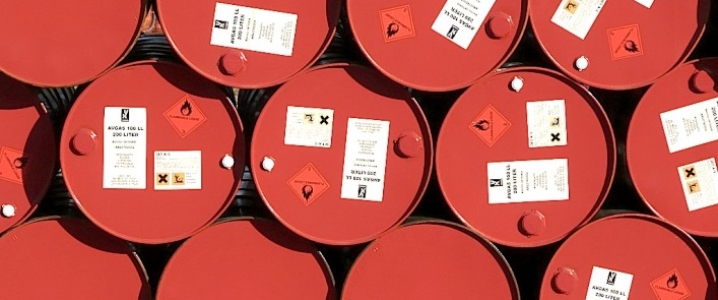
WTI dipped below $60 per barrel in early trading on Friday, the lowest price level in nearly a year. With prices down more than 20 percent from the October peak, WTI is now officially in a bear market.
Many of the factors that conspired to push oil prices up in recent months have all seemed to reverse course at exactly the same time.
First, U.S. shale production is skyrocketing. The EIA reported an unbelievable increase of 400,000 bpd in U.S. oil production in the first week of November, pushing output up to 11.6 million barrels per day (mb/d). The agency rounds off weekly estimates to the nearest hundred thousand barrels, somewhat obscuring the trajectory of growth, but the huge increase is notable by any standard.
Also, the weekly estimates are not as accurate as the monthly figures, which are published on a roughly 2-month lag. As such, they should be taken with a grain of salt. However, the massive increase comes just days after the EIA reported a huge increase in production in the monthly data – at 11.346 mb/d in August, the U.S. oil industry has clearly been producing a lot more than previously thought. That lends some weight to the weekly figures.
Another previously-bullish factor was Iran. With Iran’s oil exports spiraling downwards at the end of the summer and into September, the oil market grew very concerned about adequate global supply and the rapidly dwindling volume of spare capacity. U.S. waivers on countries importing Iranian oil removed that threat. Washington still wants to tighten the screws – and in fact, the sudden bearishness in the market gives the Trump administration more leeway to do just that – but in the near-term, Iran will continue to export.
A third factor is OPEC+ production. Saudi Arabia, the UAE, Iraq, Russia and Libya have all increased production in recent months, offsetting the losses from Iran. Now, the group has a different problem on its hands. A technical committee to the OPEC+ coalition is set to meet this weekend where it will take stock of the oil market. They will also consider options going forward for managing the market, including the potential for a production cut in 2019 to avoid another market downturn. The 180-degree turn – from adding supply just a few months ago to now considering a cut – is a remarkable indicator that demonstrates how quickly the sentiment has turned.
Finally, the global economy continues to throw up red flags. Demand has already been revised down by most energy forecasters, and is expected to continue to slow next year. A worse economic downturn is not out of the cards, which would result in much sharper revisions. “As OPEC exports continue to rise, inventories continue to build, which is putting downward pressure on oil prices,” Bernstein Energy said. “A slowdown in the global economy remains the key downside risk to oil.”
On Friday, WTI fell below $60 per barrel for the first time in this calendar year. Brent fell below $70. “There is no slowing down the bear train,” Stephen Brennock, analyst at London brokerage PVM Oil, told Reuters. “Instead, the energy complex has extended a rout driven by swelling global supplies and a softening demand outlook.”
To top it off, Iraq and Kurdistan are nearing a deal that could reopen shuttered oil production from disputed Kirkuk oil fields, according to the FT. After Iraq reclaimed territory from the Kurds in and around Kirkuk a year ago, operations at the fields were interrupted. The U.S. government has been pressing the two sides to resolve their differences. In fact, Washington has been reportedly pushing for more supply in several key areas in an effort to offset the outages coming from Iran. U.S. diplomats have also pressed Saudi Arabia and Kuwait to resolve their differences over the Neutral Zone oil fields, thus far with little success.
If Iraq and the Kurds reach a deal, it could add another 400,000 bpd of supply to the global oil market.
That would surely put a lot more pressure on OPEC+ to take action. “Market participants are clearly testing the pain threshold of oil producers in a bid to force them to reduce supply,” Commerzbank said in a note. With supplies rising and prices falling, oil traders are surely starting to factor in rising odds of an OPEC+ production cut when the group meets in a few weeks in Vienna. “If they fail to signal any intention to reverse the latest increase in production, oil prices threaten to slide further.”
























